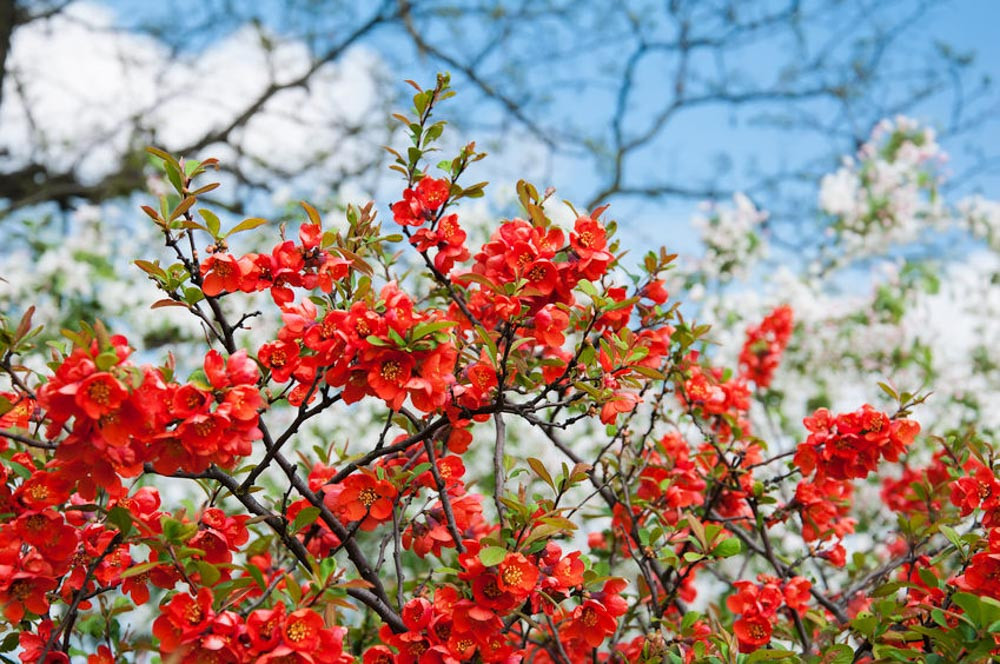Chaenomeles (Flowering Quince)
Chaenomeles, commonly known as Flowering Quince, is a genus in the Rosaceae family that encompasses several species of hardy deciduous shrubs noted for their attractive flowers and unique growth habits.
Habit: Flowering Quince species are known for their sprawling, sometimes tangled growth habit, with spiny branches forming dense thickets. This characteristic makes them excellent for use as barrier plants or hedges. Their natural inclination to spread can be channeled through pruning to form more structured shapes, making them versatile for various landscape designs.
Hardiness: Flowering quince is exceptionally hardy, tolerating a wide range of soil types, though it prefers well-drained, humus-rich soil. It thrives in full sun to part shade. The plant is cold-hardy, suitable for USDA zones 4-9, allowing it to withstand harsh winters while still producing vibrant blooms during the growing season.
Flowers and Bloom Time: One of the most captivating features of the Flowering Quince is the profusion of flowers that cover the plant, often before the leaves fully emerge, signaling the arrival of spring. The bright orange-scarlet, white, or pink flowers bloom in late winter or early spring, creating a brilliant floral display when there is little to be excited about in the garden. The flowers provide one of the earliest nectar sources for pollinators.
Uses: Beyond its ornamental appeal, Chaenomeles is used in various ways. The fruits, resembling small quinces, are high in pectin and can be used to make jellies and preserves. The dense, thorny structure provides a secure shelter for wildlife, while the flowers attract pollinators. Its robust nature allows it to be an effective windbreak or privacy screen. Their pretty branches can be cut in late winter and forced to bloom indoors for our greatest pleasure.
Benefits: Flowering Quince plants are low-maintenance, requiring minimal upkeep once established. Their tolerance to pruning makes them suitable for formal or informal settings. Additionally, they offer ecological benefits, such as preventing soil erosion and providing habitat and food for wildlife.

